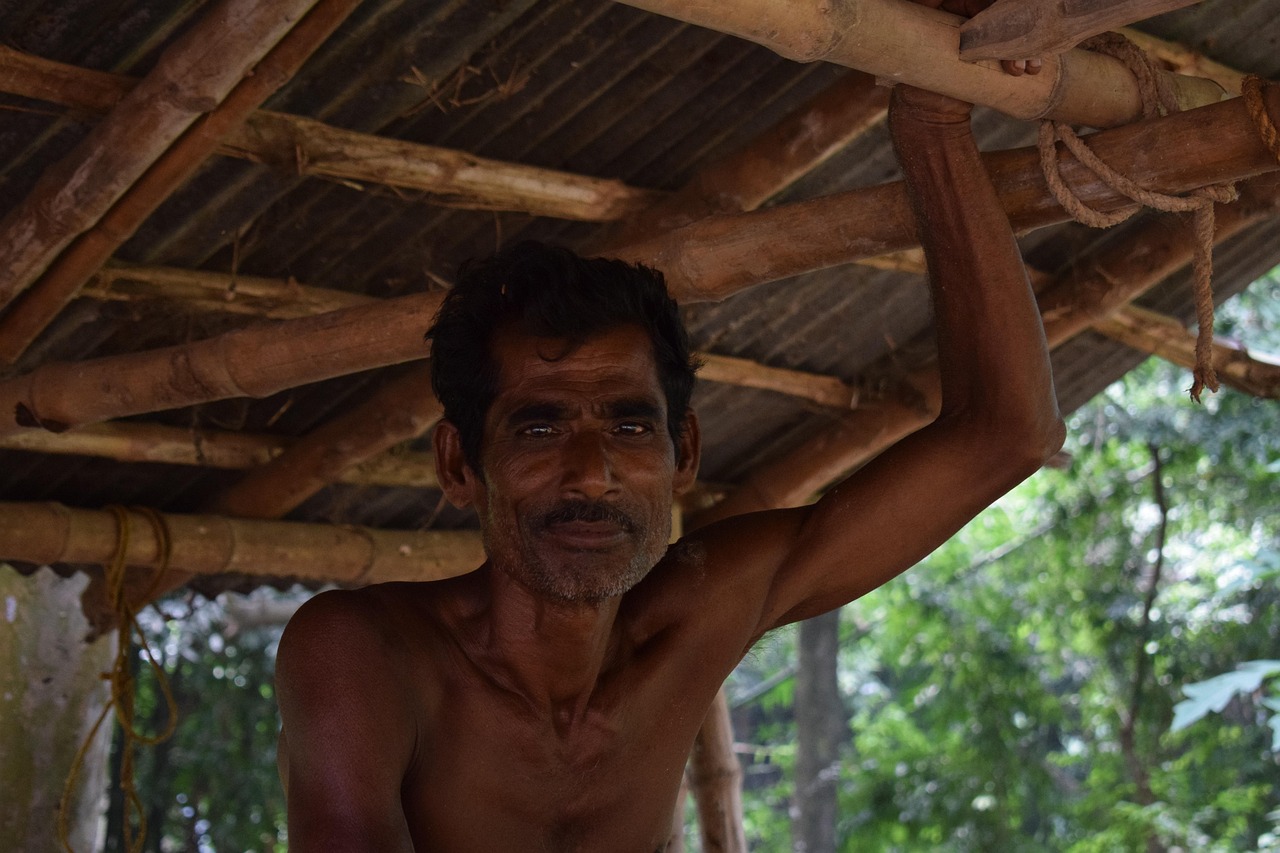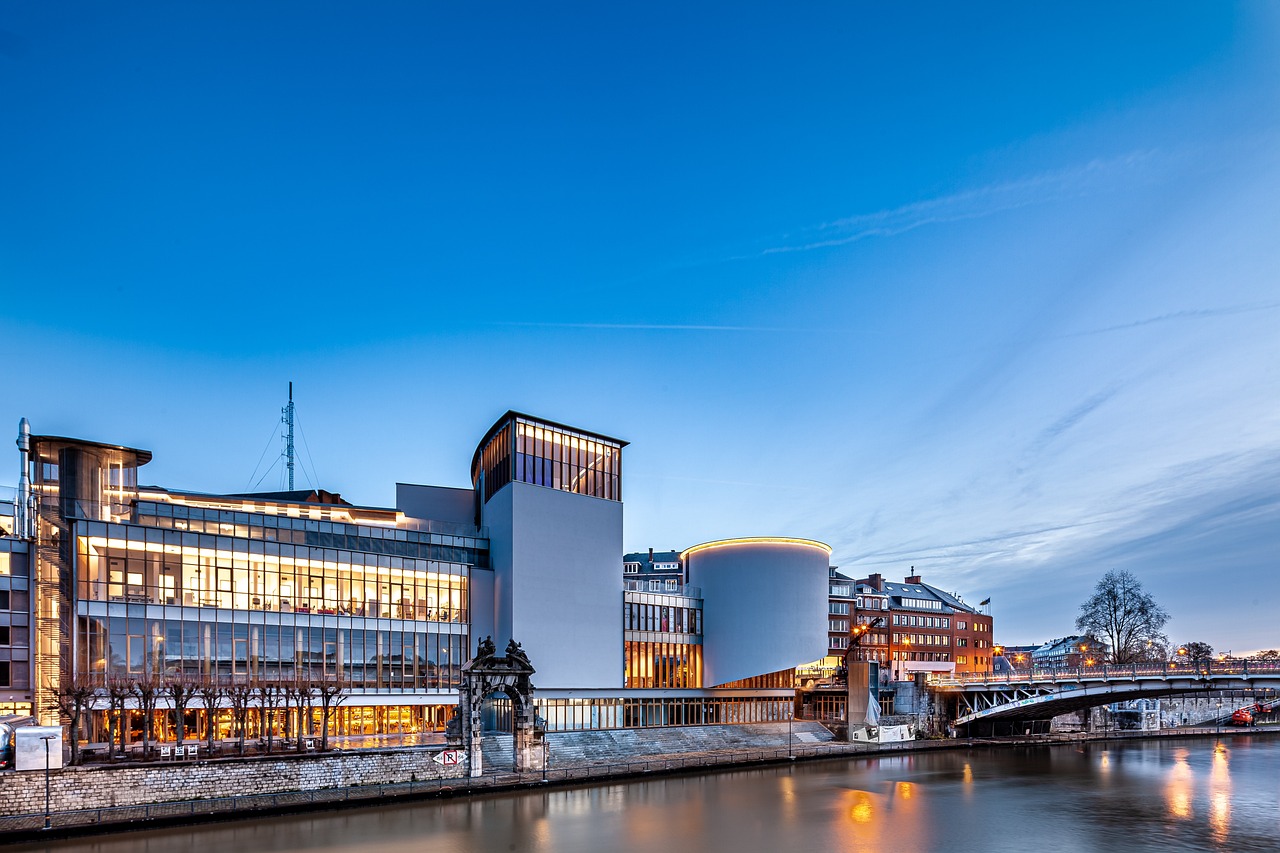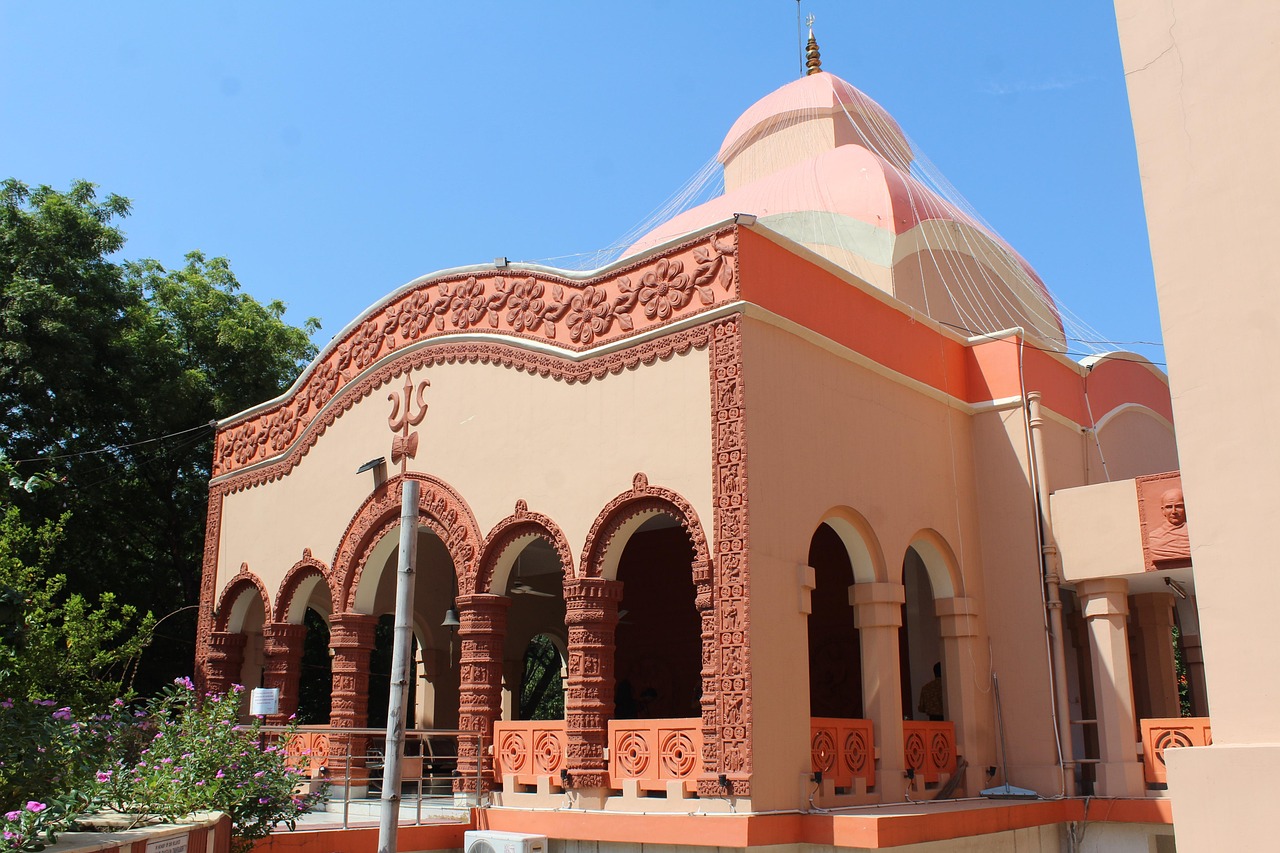This article delves into the leadership of Mamata Banerjee, exploring her impact on West Bengal’s socio-economic landscape and the transformative policies she has implemented since taking office. Her journey from a grassroots activist to the Chief Minister of West Bengal is a testament to her resilience and vision for the state.
Early Life and Political Journey
Mamata Banerjee was born into a humble family, which instilled in her a strong sense of social justice. Her early experiences fueled her passion for politics, leading her to become the first female Chief Minister of West Bengal. Her path was marked by challenges, yet her determination allowed her to break through barriers in a traditionally male-dominated arena.
Leadership Style and Governance
Mamata’s leadership style is distinctive, characterized by a grassroots approach. She prioritizes inclusivity, transparency, and accountability, which have been pivotal in her political success. Her governance model encourages public participation and civic engagement.
- Grassroots Engagement: Mamata has a unique ability to connect with citizens, fostering community involvement and empowering local leaders.
- Public Feedback Mechanisms: She has established various channels for public feedback, ensuring that citizens’ voices are heard and valued.
Policy Initiatives for Development
Under her administration, several key policies aimed at economic growth have been introduced. These initiatives have revitalized various sectors, promoting sustainable development across West Bengal.
Economic Growth and Employment Generation
Mamata’s policies have significantly impacted West Bengal’s economy. Her focus on job creation and industrial growth has transformed the state’s economic landscape, attracting investments and fostering entrepreneurship.
- Industrial Development: She has prioritized industrial development through incentives and infrastructure improvements.
- Employment Schemes: Various employment schemes have been introduced to directly address unemployment, providing training and job placements for the youth.
Social Welfare Programs
Mamata’s commitment to social welfare is evident in her numerous initiatives aimed at improving the quality of life for all citizens, particularly the underprivileged and marginalized communities.
- Healthcare Initiatives: Several healthcare initiatives have been launched to ensure access to affordable medical services.
- Education Reforms: Education reforms aim to enhance the quality of education, making it more accessible to all children in West Bengal.
Challenges Faced and Overcoming Adversity
Despite her successes, Mamata has faced numerous challenges, including political opposition and natural disasters. Her ability to navigate these issues showcases her resilience and commitment to her vision for West Bengal.
Future Vision for West Bengal
Mamata Banerjee’s vision for the future emphasizes sustainable development, social equity, and inclusive governance. Her ongoing efforts aim to position the state as a leader in various sectors, ensuring that every citizen has equal opportunities for growth and success.
In conclusion, Mamata Banerjee’s leadership has profoundly shaped West Bengal’s socio-economic landscape. Her transformative policies and commitment to public welfare continue to inspire hope and progress in the state.

Early Life and Political Journey
Mamata Banerjee’s early life has been a significant factor in shaping her political ideology and approach to governance. Born on January 5, 1955, in a humble family in Kolkata, West Bengal, she faced numerous challenges from a young age. Her father, a freedom fighter, instilled in her the values of resilience and determination, which would later define her political career.
Growing up in a modest environment, Mamata was acutely aware of the struggles faced by the underprivileged. This awareness fueled her passion for social justice and equity, shaping her vision for a better society. She completed her education at University of Calcutta, where she was actively involved in student politics. Her charisma and ability to connect with the youth laid the groundwork for her political journey.
After joining the Indian National Congress in the late 1970s, Mamata quickly rose through the ranks, becoming the party’s youngest general secretary. However, her ambition to bring about change led her to establish the All India Trinamool Congress (AITC) in 1998, marking a pivotal moment in West Bengal’s political landscape. Her party focused on grassroots mobilization and championing the causes of the marginalized, setting it apart from traditional political entities.
Throughout her political career, Mamata Banerjee has faced numerous hurdles, particularly in a male-dominated field. Her journey reflects an unwavering commitment to her ideals, as she often challenged the status quo and fought against political adversaries. Her tenacity and ability to resonate with the common people have earned her a loyal following and a significant place in Indian politics.
In conclusion, Mamata Banerjee’s early life and political journey are a testament to her resilience and determination. Her experiences have shaped her into a formidable leader, dedicated to uplifting the marginalized and transforming West Bengal into a state of growth and opportunity.

Leadership Style and Governance
Mamata Banerjee’s leadership style is a remarkable blend of grassroots engagement and strategic governance. Her approach is deeply rooted in the principles of inclusivity, transparency, and accountability, which have been essential to her political success and the overall development of West Bengal.
One of the defining features of Mamata’s leadership is her commitment to grassroots engagement. She has made it a priority to connect with the people of West Bengal, ensuring that their voices are heard in the decision-making process. This connection fosters a sense of community and encourages local participation in governance. Through regular public meetings and outreach programs, Mamata empowers citizens to take an active role in shaping their own futures.
Under her governance, various community programs have been launched, focusing on local needs. These initiatives range from education and healthcare to employment opportunities for marginalized groups. By addressing these critical areas, Mamata has created a more equitable society where everyone has the chance to thrive.
Moreover, Mamata has implemented robust public feedback mechanisms. This enables citizens to voice their concerns and suggestions directly to their leaders, which not only enhances transparency but also builds trust between the government and the people. By valuing public input, she ensures that policies are reflective of the community’s needs and aspirations.
In summary, Mamata Banerjee’s leadership style is characterized by a strong grassroots approach that emphasizes inclusivity, transparency, and accountability. Her governance model not only strengthens community ties but also fosters a culture of active participation, ultimately leading to a more engaged and empowered citizenry.
Grassroots Engagement
Mamata Banerjee’s leadership in West Bengal has been marked by her exceptional ability to engage with the community, creating a vibrant atmosphere of participation and collaboration. This grassroots engagement is not merely a political strategy; it is a fundamental aspect of her governance that has significantly transformed the relationship between the government and its citizens.
Through various initiatives, Mamata has successfully fostered a sense of community involvement. Her approach emphasizes the importance of local leaders, empowering them to take charge of their neighborhoods and ensure that the voices of the people are heard. This empowerment has led to a more inclusive governance model, where citizens feel they have a stake in the decision-making process.
- Community Meetings: Regular town hall meetings are held to allow citizens to voice their concerns and suggestions directly to their leaders.
- Local Development Committees: These committees, formed at the grassroots level, play a crucial role in identifying local needs and prioritizing projects.
- Feedback Mechanisms: Various channels, including social media, have been established to gather public feedback on policies and initiatives.
Moreover, Mamata’s administration has launched numerous community programs aimed at addressing local issues, such as education, healthcare, and employment. These programs are designed to engage citizens actively, ensuring that they are not just recipients of government services but also contributors to the development of their communities.
In conclusion, Mamata Banerjee’s unique ability to connect with citizens has not only enhanced public participation in governance but has also fostered a stronger sense of community. By empowering local leaders and implementing effective engagement strategies, she has built a framework that encourages civic involvement and collaboration, paving the way for a more democratic and responsive government.
Community Programs
have become a cornerstone of Mamata Banerjee’s administration, reflecting her commitment to improving the lives of the underprivileged in West Bengal. Under her leadership, a plethora of initiatives have been launched, each designed to address the diverse needs of local communities. These programs are not merely bureaucratic efforts; they are tailored to empower marginalized groups by providing essential services and opportunities.
One of the key areas of focus has been education. Initiatives such as the Kanyashree Prakalpa scheme aim to promote education among girls, ensuring that they have access to schooling and financial support. This program has significantly reduced dropout rates and increased enrollment in schools across the state.
In addition to education, health care is another critical component of these community programs. The Swasthya Sathi scheme provides health insurance to families, enabling them to access medical services without the burden of high costs. This initiative has been particularly beneficial for low-income households, ensuring that health care is a right, not a privilege.
Employment opportunities have also been a priority. The government has launched various skill development programs aimed at equipping youth with the necessary skills to thrive in the job market. These initiatives facilitate job placements and internships, bridging the gap between education and employment.
Moreover, the administration has established community centers that serve as hubs for various programs, offering workshops, training sessions, and resources to empower local residents. This grassroots approach fosters a sense of community ownership and encourages active participation in governance.
In conclusion, Mamata Banerjee’s community programs are a testament to her vision of an inclusive and equitable West Bengal. By addressing the fundamental needs of education, health care, and employment, these initiatives not only uplift marginalized groups but also contribute to the overall development of the state.
Public Feedback Mechanisms
Mamata Banerjee has made significant strides in enhancing the democratic process in West Bengal through the establishment of various . These channels are designed to ensure that the voices of citizens are not only heard but also valued in the decision-making process.
One of the key aspects of Mamata’s approach is her commitment to transparency. By implementing platforms such as online surveys, community forums, and mobile apps, she has created an environment where citizens can easily express their opinions and concerns regarding government policies. This proactive stance has fostered a culture of civic engagement, encouraging individuals to take an active role in shaping their communities.
Moreover, Mamata’s administration has prioritized accountability by regularly publishing reports and updates on how public feedback is being utilized. This not only builds trust but also empowers citizens, making them feel integral to the governance process. The feedback collected is often analyzed and used to inform policy adjustments, demonstrating that the government is responsive to the needs of its constituents.
Additionally, community outreach programs have been implemented to educate citizens about their rights and the importance of participating in governance. These initiatives aim to bridge the gap between the government and the public, ensuring that all voices, especially those from marginalized groups, are included.
In conclusion, Mamata Banerjee’s focus on establishing effective public feedback mechanisms has significantly enhanced democratic participation in West Bengal. By actively listening to the citizens and incorporating their feedback into policy-making, she has not only strengthened the bond between the government and the people but has also paved the way for a more inclusive and responsive governance model.
Policy Initiatives for Development
Mamata Banerjee’s administration has undertaken a series of transformative policy initiatives aimed at fostering economic growth and sustainable development across West Bengal. These policies have not only revitalized traditional sectors but have also introduced new avenues for progress, ensuring a brighter future for the state’s citizens.
One of the key aspects of Mamata’s policies is the focus on infrastructure development. Significant investments in roads, bridges, and public transportation systems have improved connectivity, facilitating easier access to markets and resources. This infrastructure boom has been pivotal in attracting both domestic and foreign investments, positioning West Bengal as a competitive player in the regional economy.
- Promotion of Small and Medium Enterprises (SMEs): The government has launched various schemes to support SMEs, providing them with financial assistance, training, and market access. This initiative has empowered local entrepreneurs and created numerous job opportunities.
- Digital Transformation: Mamata’s administration has embraced technology to enhance governance and service delivery. The introduction of e-governance initiatives has streamlined processes, making it easier for citizens to access government services.
- Skill Development Programs: Recognizing the importance of a skilled workforce, several training programs have been initiated. These programs focus on equipping the youth with the necessary skills for emerging industries, thus improving their employability.
Moreover, the administration has prioritized sustainable practices in its policy framework. Initiatives aimed at promoting renewable energy sources and sustainable agriculture have been launched to ensure that economic growth does not come at the expense of the environment. This commitment to sustainability reflects a forward-thinking approach, ensuring that future generations inherit a healthy ecosystem.
In conclusion, Mamata Banerjee’s policy initiatives are designed to create a robust economic framework for West Bengal. By focusing on infrastructure, entrepreneurship, and sustainable practices, her administration is paving the way for a prosperous future, demonstrating a strong commitment to the development of the state.

Economic Growth and Employment Generation
Mamata Banerjee: The Powerhouse Behind West Bengal’s Growth and Development
This article delves into the leadership of Mamata Banerjee, exploring her impact on West Bengal’s socio-economic landscape and the transformative policies she has implemented since taking office.
Mamata’s policies have had a profound impact on West Bengal’s economy. Her strategic focus on job creation and industrial growth has not only transformed the state’s economic landscape but has also attracted significant investments and fostered a culture of entrepreneurship. This transformation is evident in several key aspects:
- Investment Attraction: Under Mamata’s leadership, West Bengal has become a favorable destination for both domestic and international investors. The government has implemented various incentives, such as tax breaks and streamlined regulations, which have encouraged businesses to set up operations in the state.
- Infrastructure Development: Significant investments in infrastructure, including roads, ports, and power supply, have created a conducive environment for industries to thrive. Improved infrastructure not only supports existing businesses but also attracts new enterprises.
- Support for Startups: Mamata’s administration has introduced various initiatives aimed at supporting startups and small businesses. These programs provide financial assistance, mentorship, and training, enabling young entrepreneurs to launch their ventures successfully.
- Employment Generation: The introduction of numerous employment schemes has directly addressed the issue of unemployment in the state. Programs focusing on skill development and vocational training have enhanced the employability of the youth, equipping them with the necessary skills to meet industry demands.
The overall impact of these policies has been remarkable. The state’s GDP has shown consistent growth, and the unemployment rate has decreased significantly. By creating a robust economic framework, Mamata Banerjee has laid the foundation for a prosperous future for West Bengal.
Conclusion: Mamata Banerjee’s focus on economic growth and employment generation has not only transformed West Bengal’s economy but has also improved the quality of life for its citizens. Her policies reflect a commitment to sustainable development and inclusive growth, ensuring that the benefits of economic progress reach all segments of society.
Industrial Development
Industrial Development in West Bengal: A Catalyst for Economic Growth
West Bengal has witnessed a remarkable transformation in its industrial landscape under the leadership of Mamata Banerjee. Her administration has implemented a series of strategic initiatives aimed at fostering , which have not only attracted investments but also created numerous job opportunities for the local population.
Mamata’s focus on incentives for businesses has played a crucial role in revitalizing the state’s economy. By offering tax breaks, subsidies, and streamlined regulatory processes, her government has made West Bengal an attractive destination for both domestic and international investors. This proactive approach has led to the establishment of various industries, including manufacturing, IT, and renewable energy sectors.
In addition to financial incentives, substantial infrastructure improvements have been prioritized. The enhancement of transportation networks, including roads, railways, and ports, has facilitated easier access for businesses and improved supply chain efficiency. For instance, the development of the Bengal Global Business Summit has showcased the state’s potential to investors, resulting in significant investment commitments.
| Key Initiatives | Description |
|---|---|
| Investment Incentives | Tax breaks and subsidies for new industries. |
| Infrastructure Development | Upgrading transportation networks and facilities. |
| Skill Development Programs | Training initiatives to enhance workforce employability. |
The establishment of skill development programs has further complemented these efforts. By equipping the local workforce with necessary skills, the state has ensured that its citizens are ready to meet the demands of new industries. This not only boosts employment rates but also enhances the overall productivity of the state.
In conclusion, Mamata Banerjee’s commitment to through incentives and infrastructure improvements has significantly boosted West Bengal’s economy. These efforts have not only created a favorable environment for businesses but have also empowered the local workforce, setting the stage for sustainable growth in the future.
Employment Schemes
The government of Mamata Banerjee has taken significant strides in addressing the critical issue of unemployment in West Bengal. Through the introduction of various , her administration has created a robust framework aimed at empowering the youth and enhancing their employability.
These initiatives are designed not only to provide immediate job placements but also to equip young individuals with the necessary skills through comprehensive training programs. By focusing on practical skills relevant to the job market, these programs ensure that participants are well-prepared for the challenges of modern employment.
| Employment Scheme | Key Features | Target Audience |
|---|---|---|
| Skill Development Program | Vocational training in various sectors | Unemployed youth |
| Job Placement Initiative | Direct placements with local businesses | Graduates and skilled workers |
| Entrepreneurship Support | Funding and mentorship for startups | Aspiring entrepreneurs |
Moreover, these schemes are tailored to meet the diverse needs of the population. For instance, the Skill Development Program focuses on vocational training that aligns with the demands of local industries, thereby increasing the chances of employment for participants. Meanwhile, the Job Placement Initiative directly connects job seekers with employers, streamlining the hiring process.
In addition to addressing immediate employment needs, these initiatives foster a culture of entrepreneurship among the youth. By providing funding and mentorship through the Entrepreneurship Support program, the government encourages young individuals to start their own businesses, contributing to the overall economic growth of the state.
In conclusion, the employment schemes introduced under Mamata Banerjee’s administration play a pivotal role in combating unemployment in West Bengal. By offering training and job placement opportunities, these initiatives not only enhance the employability of the youth but also contribute to the state’s economic development.

Social Welfare Programs
Mamata Banerjee’s commitment to social welfare is a cornerstone of her governance, reflecting her deep-seated belief in uplifting the marginalized and underprivileged communities of West Bengal. Through a variety of initiatives, she has aimed to enhance the quality of life for all citizens, ensuring that no one is left behind.
One of the most significant aspects of her social welfare programs is the focus on healthcare access. Under her leadership, the state has witnessed the launch of numerous healthcare initiatives aimed at providing affordable and quality medical services to the underserved. For instance, the Kanyashree Prakalpa scheme not only promotes education among girls but also ensures their health and well-being through various health check-up camps.
In addition to healthcare, Mamata has prioritized education reforms. Her administration has implemented policies to improve school infrastructure and increase funding for educational programs. This focus has made education more accessible, particularly for children from economically disadvantaged backgrounds. The introduction of the Shikshashree scheme exemplifies her commitment to providing financial assistance for students from marginalized communities, thereby promoting educational equity.
Moreover, Mamata’s government has actively worked towards employment generation through various skill development programs. These initiatives aim to equip the youth with necessary skills, enhancing their employability and fostering economic independence. The Utkarsh Bangla program is a prime example, providing vocational training to thousands of young individuals across the state.
Furthermore, Mamata has established robust feedback mechanisms to ensure that the voices of the citizens are heard. This transparency fosters trust and encourages community participation in governance. By actively engaging with the public, she has been able to tailor her social welfare programs to meet the specific needs of local communities.
In conclusion, Mamata Banerjee’s dedication to social welfare is evident through her comprehensive initiatives aimed at improving the quality of life for all citizens, especially those in marginalized communities. Her focus on healthcare, education, and employment generation not only uplifts individuals but also contributes to the overall development of West Bengal.
Healthcare Initiatives
Mamata Banerjee’s Healthcare Initiatives: A Commitment to Public Health
In recent years, Mamata Banerjee has emerged as a transformative leader in West Bengal, particularly through her comprehensive healthcare initiatives. Her administration has prioritized affordable medical services, ensuring that every citizen has access to essential healthcare. This commitment has significantly improved health outcomes across the state, making healthcare more accessible and equitable.
| Initiative | Description | Impact |
|---|---|---|
| Swasti Sathi | A health insurance scheme providing coverage for families. | Over 7 million families benefited from financial protection against health expenses. |
| Health and Wellness Centers | Establishment of centers to provide primary healthcare services. | Improved access to basic healthcare services in rural areas. |
| Nutrition Programs | Initiatives aimed at improving maternal and child nutrition. | Reduction in malnutrition rates among children under five. |
Mamata’s approach to healthcare is not just about treating illnesses; it emphasizes preventive care and community health education. By launching various awareness campaigns, her government has successfully educated the public about hygiene, nutrition, and disease prevention, fostering a culture of health consciousness.
Moreover, the establishment of telemedicine services has bridged the gap between healthcare providers and patients, especially in remote areas. This innovative approach allows individuals to consult with doctors without the need for travel, ensuring timely medical advice and reducing the burden on healthcare facilities.
In conclusion, Mamata Banerjee’s healthcare initiatives represent a significant leap towards a healthier West Bengal. By focusing on accessibility, affordability, and education, her administration is not only improving immediate health outcomes but also laying the groundwork for sustainable health practices in the future.
Education Reforms
Education Reforms: Enhancing Quality and Accessibility in West Bengal
Under the visionary leadership of Mamata Banerjee, in West Bengal have taken significant strides towards improving the quality and accessibility of education for all children. Recognizing that education is a fundamental right, her administration has implemented a series of transformative policies aimed at creating a more equitable educational landscape.
- Increased Funding: The government has allocated substantial financial resources to enhance educational institutions across the state. This funding is directed towards upgrading facilities, hiring qualified teachers, and providing essential learning materials.
- Infrastructure Improvements: Significant investments have been made in school infrastructure, including the construction of new classrooms, libraries, and laboratories. These improvements create a conducive learning environment for students.
- Access to Education: Special initiatives have been launched to ensure that education reaches marginalized communities. Programs aimed at reducing dropout rates and promoting enrollment among girls and underprivileged children have shown promising results.
Moreover, the introduction of digital learning platforms has revolutionized the way education is delivered. By integrating technology into the classroom, students are now able to access a wealth of information and resources that were previously unavailable to them. This shift not only enhances learning outcomes but also prepares students for a technology-driven world.
Additionally, the government has prioritized teacher training programs to ensure that educators are well-equipped to deliver quality education. Continuous professional development opportunities have been established, fostering a culture of lifelong learning among teachers.
In conclusion, Mamata Banerjee’s education reforms reflect a comprehensive approach to enhancing the quality of education in West Bengal. By focusing on funding, infrastructure, and access, her administration is paving the way for a brighter future for the children of the state. These reforms not only aim to improve academic performance but also to empower the next generation with the skills necessary for success in an ever-evolving world.

Challenges Faced and Overcoming Adversity
Throughout her political journey, Mamata Banerjee has encountered a myriad of challenges that have tested her resilience and commitment to her vision for West Bengal. Despite the numerous obstacles, her ability to navigate through political opposition and social issues has been pivotal to her leadership success.
One significant challenge has been the political opposition she has faced. As a leader in a highly competitive political landscape, Mamata has often found herself at odds with rival parties. Her strategies to counteract this opposition have showcased her political acumen, allowing her to effectively communicate her policies and garner public support. By engaging directly with citizens, she has fostered a sense of loyalty and trust, which has helped her maintain a strong foothold in the state.
In addition to political challenges, Mamata has also dealt with social issues that affect the lives of many West Bengal residents. Issues such as poverty, unemployment, and education disparities have been at the forefront of her governance. Her administration has implemented various programs aimed at addressing these concerns, demonstrating her commitment to improving the quality of life for all citizens, particularly the marginalized.
Moreover, Mamata has had to manage natural disasters that have struck the state, such as cyclones and floods. Her proactive measures in crisis management have been crucial in helping communities recover and rebuild. By mobilizing resources quickly and effectively, she has shown her dedication to the welfare of the people during challenging times.
In conclusion, Mamata Banerjee’s journey is a testament to her resilience in the face of adversity. Her ability to confront and overcome challenges has not only solidified her position as a leader but has also paved the way for a brighter future for West Bengal.
Political Opposition
Mamata Banerjee has faced considerable throughout her time in office, which has tested her resolve and leadership capabilities. This opposition has often come from rival political parties, dissenting factions within her own party, and various interest groups. Despite these challenges, Mamata has demonstrated remarkable political acumen and a steadfast determination to govern effectively.
Her approach to countering political opposition has been multifaceted. Firstly, she has engaged in strategic alliances with smaller parties and independent leaders to consolidate her power base. By fostering unity among diverse groups, she has been able to create a formidable front against her adversaries. This strategy not only strengthens her position but also amplifies her voice on critical issues affecting the state.
Moreover, Mamata has prioritized communication and transparency in her governance. She has established various platforms for citizens to voice their concerns and feedback, which has helped her maintain public support. By actively listening to the electorate, she has been able to address grievances and mitigate dissent, thereby reinforcing her leadership.
In addition to grassroots engagement, Mamata has employed a robust media strategy to counter misinformation and portray her policies positively. By leveraging social media and traditional news outlets, she has been able to communicate her vision and achievements effectively, counteracting negative narratives propagated by her opponents.
Furthermore, her administration has focused on delivering tangible results through various development initiatives. By prioritizing economic growth, job creation, and social welfare programs, she has aimed to improve the quality of life for citizens, thereby reducing the appeal of her political rivals. This proactive approach has helped her to build a loyal support base, even in the face of adversity.
In conclusion, Mamata Banerjee’s ability to navigate political opposition showcases her resilience and strategic thinking. Her commitment to effective governance, combined with her innovative approaches to engaging with citizens and countering dissent, has solidified her position as a significant political figure in West Bengal.
Natural Disasters and Crisis Management
Mamata Banerjee’s response to natural disasters has been a defining aspect of her leadership in West Bengal. Her proactive measures and strategic planning have significantly influenced crisis management in the state, demonstrating her commitment to the welfare of its citizens.
During times of crisis, such as severe floods and cyclones, Mamata has mobilized resources swiftly to ensure that affected communities receive immediate assistance. Her government has implemented emergency response protocols that include:
- Rapid Assessment Teams: These teams are deployed to assess damage and identify the needs of affected populations.
- Relief Distribution: Organized relief camps are set up to provide food, shelter, and medical assistance to those in need.
- Rehabilitation Programs: Long-term recovery plans are initiated to help communities rebuild their lives and restore their livelihoods.
Mamata’s leadership during these challenging times not only ensures immediate relief but also fosters a sense of community resilience. Her administration has worked closely with local organizations and volunteers to enhance the effectiveness of relief efforts. This collaboration has been pivotal in creating a robust support system for the vulnerable.
Moreover, her focus on disaster preparedness has led to the establishment of training programs for local authorities and citizens. These initiatives aim to equip them with the skills necessary to respond effectively to future disasters. By promoting awareness and preparedness, Mamata has instilled a sense of confidence among the populace, empowering them to face adversities head-on.
In conclusion, Mamata Banerjee’s approach to natural disasters exemplifies her leadership qualities and her unwavering dedication to the people of West Bengal. Her proactive strategies not only mitigate the immediate impacts of disasters but also lay the groundwork for sustainable recovery and resilience.

Future Vision for West Bengal
Mamata Banerjee: The Powerhouse Behind West Bengal’s Growth and Development
As the Chief Minister of West Bengal, Mamata Banerjee has laid out a vision for the future that prioritizes sustainable development, social equity, and inclusive governance. Her forward-thinking approach is designed to not only enhance the quality of life for all citizens but also position West Bengal as a leader in various sectors.
| Key Focus Areas | Description |
|---|---|
| Sustainable Development | Mamata aims to implement policies that promote environmental sustainability, ensuring that economic growth does not come at the expense of natural resources. |
| Social Equity | Her initiatives focus on reducing disparities among different communities, providing equal opportunities for education, healthcare, and employment. |
| Inclusive Governance | Mamata emphasizes the importance of citizen participation in governance, creating channels for public feedback and engagement. |
In her quest for a better West Bengal, Mamata Banerjee has introduced several innovative policies. These include:
- Green Initiatives: Programs aimed at increasing green cover and promoting renewable energy sources.
- Skill Development: Training programs designed to enhance the skills of the workforce, particularly among the youth.
- Social Welfare Schemes: Initiatives that target the underprivileged, ensuring access to essential resources and services.
Mamata’s vision also extends to enhancing infrastructure across the state. By improving transportation and digital connectivity, she aims to facilitate economic activities and attract investments. This holistic approach not only addresses immediate challenges but also paves the way for long-term growth.
In conclusion, Mamata Banerjee’s vision for West Bengal is both ambitious and inclusive. Her commitment to sustainable development, social equity, and inclusive governance positions the state to thrive in the coming years, making it a model for others to follow.
Sustainable Development Goals
are essential for ensuring a balanced and equitable future for all. Under the leadership of Mamata Banerjee, West Bengal is making significant strides towards achieving these goals through innovative and comprehensive policies. Her administration is dedicated to addressing pressing environmental issues while fostering economic growth and social equity.
Mamata’s commitment to environmental sustainability is evident in various initiatives aimed at reducing carbon footprints and promoting renewable energy sources. The state has launched programs that encourage the use of solar energy, waste management, and conservation efforts, ensuring that natural resources are preserved for future generations.
- Renewable Energy Initiatives: Investments in solar and wind energy projects are being prioritized to reduce reliance on fossil fuels.
- Waste Management Programs: Innovative waste segregation and recycling initiatives are being implemented in urban and rural areas.
- Afforestation Projects: Large-scale tree planting drives are being organized to combat deforestation and promote biodiversity.
Moreover, Mamata’s policies focus on social equity by providing equal opportunities for all citizens, particularly marginalized communities. The government has rolled out various programs aimed at empowering women, enhancing educational access, and improving healthcare services.
| Program | Objective | Impact |
|---|---|---|
| Women Empowerment Schemes | Enhance economic independence | Increased participation of women in the workforce |
| Healthcare Initiatives | Improve access to medical services | Better health outcomes in rural areas |
| Education Reforms | Increase educational access | Higher literacy rates among underprivileged communities |
In conclusion, Mamata Banerjee’s unwavering dedication to achieving the is paving the way for a brighter future for West Bengal. By prioritizing both environmental sustainability and social equity, her administration is setting a benchmark for others to follow. The commitment to innovative policies not only addresses the immediate needs of the population but also ensures that future generations inherit a thriving and sustainable environment.
Empowerment and Inclusivity
Mamata Banerjee’s vision for West Bengal is rooted in the principles of empowerment and inclusivity. Her commitment to uplifting marginalized communities is a cornerstone of her administration’s policies. By prioritizing equal opportunities for all citizens, she aims to create a society where everyone can thrive, regardless of their background.
To achieve this vision, Mamata has launched a variety of initiatives designed to address the unique challenges faced by underprivileged groups. These initiatives include:
- Access to Education: Programs that provide scholarships and resources to children from economically disadvantaged families, ensuring they have access to quality education.
- Job Creation: Employment schemes that focus on skill development and vocational training, empowering youth to secure stable jobs and contribute to the economy.
- Healthcare Access: Initiatives aimed at improving healthcare facilities in rural areas, ensuring that marginalized communities receive the medical attention they need.
- Women Empowerment: Special programs designed to support women’s entrepreneurship, providing them with the tools and resources to start their own businesses.
Mamata’s approach is not just about providing aid; it is about fostering self-sufficiency and resilience within communities. By encouraging local leadership and community involvement, her administration creates an environment where citizens feel empowered to voice their needs and participate in decision-making processes.
Furthermore, Mamata has established various feedback mechanisms, allowing citizens to express their concerns and suggestions directly to the government. This transparency not only builds trust but also encourages active civic engagement, which is essential for a thriving democracy.
In conclusion, Mamata Banerjee’s commitment to empowerment and inclusivity is transforming West Bengal into a model of social equity. By ensuring that every citizen has equal access to opportunities, she is paving the way for a brighter future where growth and success are possible for all.
Frequently Asked Questions
- What are Mamata Banerjee’s key contributions to West Bengal?
Mamata Banerjee has significantly impacted West Bengal through her focus on economic growth, social welfare programs, and community engagement. Her initiatives have improved healthcare, education, and employment opportunities for marginalized communities.
- How has Mamata’s leadership style influenced governance in West Bengal?
Her grassroots approach to leadership fosters inclusivity and transparency, allowing citizens to actively participate in governance. This engagement has built trust and empowered local leaders, enhancing public involvement in decision-making.
- What challenges has Mamata faced during her tenure?
Throughout her tenure, Mamata has encountered political opposition and natural disasters. Her resilience in navigating these challenges demonstrates her commitment to West Bengal’s development and her ability to manage crises effectively.
- What is Mamata’s vision for the future of West Bengal?
Mamata envisions a West Bengal that prioritizes sustainable development, social equity, and inclusivity. Her future initiatives aim to empower marginalized communities and ensure equal opportunities for all citizens.



























































